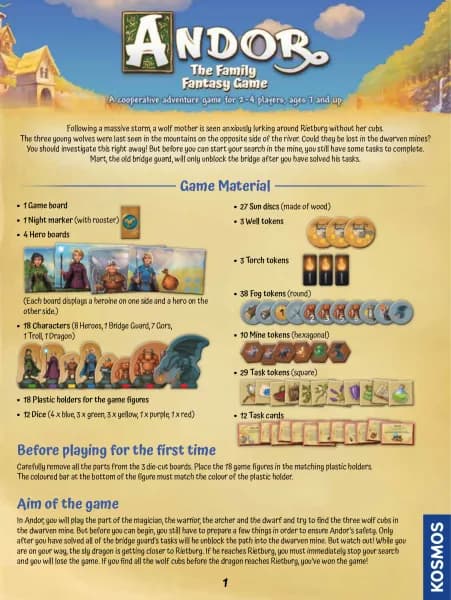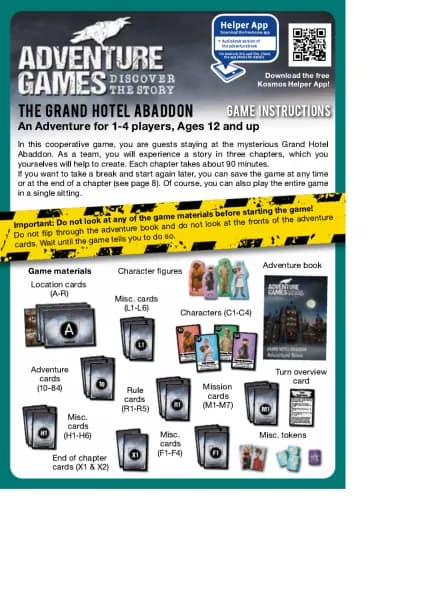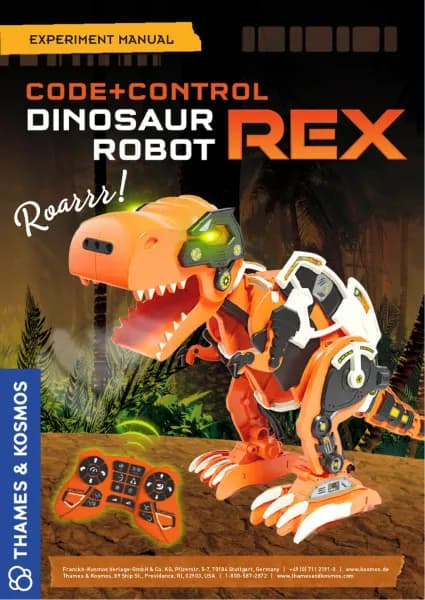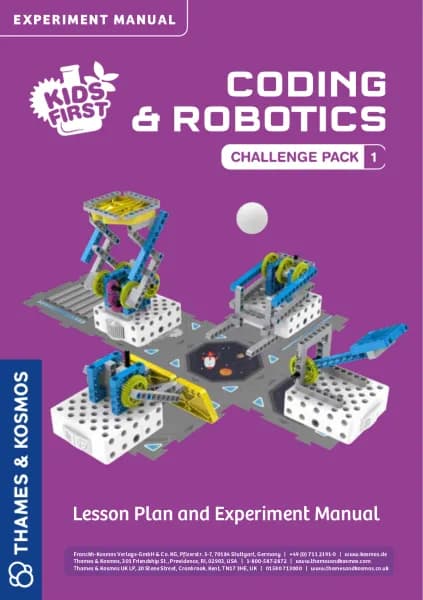Thames & Kosmos Geared-Up Gadgets handleiding
Handleiding
Je bekijkt pagina 5 van 28

Geared-Up Gadgets
3
› › › CHECK IT OUT
››› Hold two of the gear wheels together, so that the
cogs on the edges (the “teeth”) interlock. Turn one
of the wheels. The other wheel will turn as well,
automatically moving along with the first gear. This
demonstrates that interlocking gear wheels can
transmit a rotational movement.
Pay close attention to the direction of rotation: The
second wheel turns differently than the first one.
When the gear wheels
have different diameters
and, as a result, a
different number of
teeth, their rotational
speeds will also be different. The larger wheel turns
slower than the smaller one.
This shows that gear wheels can be used to convert
a slow rotational movement into a faster rotational
movement and vice versa. For example, if the larger
gear wheel has 40 teeth and the smaller wheel has
10, the smaller wheel will complete 4 rotations in the
time it takes the larger wheel to do one rotation. This
relationship between the input speed and the output
speed is known as the gear ratio. In this case, the ratio
is 1:4.
››› Use your other hand to slow down the second gear
wheel while you turn the first wheel. You will notice
that you need to apply a lot of force. This shows that
interlocking gear wheels also transmit force.
Two gear wheels on parallel shafts are known as spur
gears. If you want to transmit a rotational movement to
an axle standing perpendicular to the gear wheel, you
can use a bevel gear (you’ll use two of those for your
helicopter model). It’s also possible to arrange multiple
gear wheels one after the other to convert a slow
rotational movement into one or multiple very quick
rotational movements — as you’ll see when making the
hand mixer model.
Gear trains can be found inside many machines and
devices. For example, in mechanical clocks, the kind
you might see in a museum, gear wheels enable the
movement of a gear wheel propelled by a spring or
weights to be transmitted to the hands of the clock
.
Thanks to the different gear ratios, the hands can move
quickly (the second hand), slowly (the minute hand), or
even slower (the hour hand).
This means that you can usually choose between
multiple “gears,” that is, you can switch between
various different gear ratios.
This has a significant advantage, as gear trains don’t
just transmit rotational speeds, they also transmit
force. Cycling is easiest when you can keep pedaling at
the same speed. If you want to cycle over flat terrain
or downhill, you can switch into a high gear in the rear.
This connects the crankset with a much smaller gear on
the rear wheel. The force from the pedals is converted
into a much greater driving force making the bike move
faster.
If you’re cycling uphill, you can switch to a large gear
in the rear and a small gear in front. This allows you
to apply a smaller force on the pedals and turn them
at a faster rate but the rear wheel will rotate a larger
amount.
Before building any of the models,
you should carry out the following
little experiment.
››› In the field of engineering, two or more
interconnected gear wheels are called a
gear train, or transmission. They come in
many different shapes and sizes.
››› Bicycles generally have a chain drive,
in which gear wheels of various sizes are
connected by a chain.
Bekijk gratis de handleiding van Thames & Kosmos Geared-Up Gadgets, stel vragen en lees de antwoorden op veelvoorkomende problemen, of gebruik onze assistent om sneller informatie in de handleiding te vinden of uitleg te krijgen over specifieke functies.
Productinformatie
| Merk | Thames & Kosmos |
| Model | Geared-Up Gadgets |
| Categorie | Niet gecategoriseerd |
| Taal | Nederlands |
| Grootte | 9949 MB |







